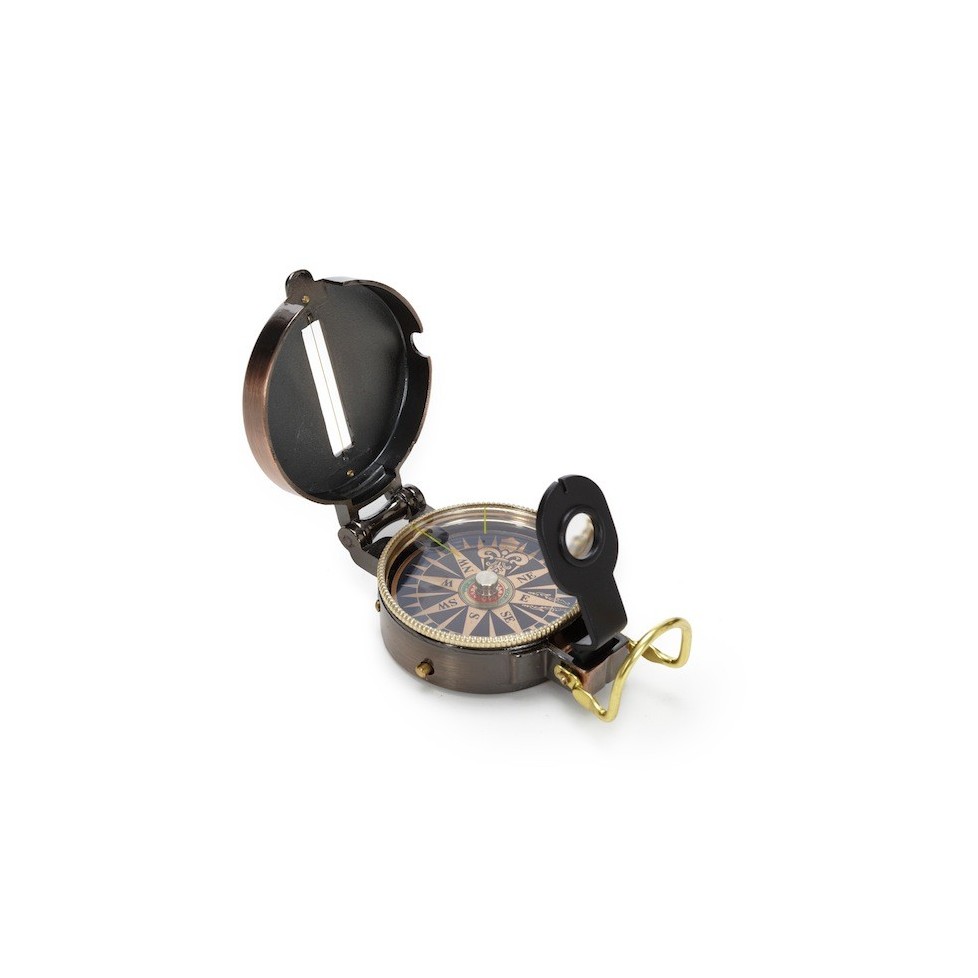

| Los pedidos realizados el día 25 de Julio, se procesarán el día 26 por fiesta local. |


Old brass "Engineering" compass.
The compass (from the Latin "passus" ("step")) opened up the world to exploration and discovery. The principle of the magnetic needle was already known to the Chinese in the 3rd century BC and was first used by feng shui priests to tell them where and how to build. It was adapted to maritime navigation by Chinese sailors around the year 1000. The first compasses comprised a magnetic needle floating in a bowl of water, with the needle suspended on a thread or threaded through a reed. The Arabs perfected this by mounting the needle on a pivot. The compass arrived in Europe between the 10th and 11th centuries, enabling sailers to cross the oceans and explorers to discover the continents. The first instrument to resemble the modern compass is attributed to Portuguese citizen Ferrande (1483).
Old brass "Engineering" compass.
SAILOR FISH KEYCHAIN. Nice key ring in the shape of a fish, it is the nautical accessory for your keys. Handmade in metal in Spain.
Nautical keychain pocket hourglass. Made of brass and mounted with a hoop.
Protect yourself from the cold with this pretty navy blue cap. One size. 100% acrylic.
Decorative brass sandglass with an acacia wood box. It runs for about 1 minute. Sizes: 5x9.5x5cm. Box: 12x6.5x6.7cm.
High precision tide indicator. An indispensable instrument to know the level of the tides throughout the year and to be able to enjoy the sea or the beach at high or low tide hours. Once you receive the instrument, adjust it to the tide times of the place where you are during the full moon. The tide indicator only needs to be adjusted once at the place...
Tide movement.
Reproduction of an old compass with a beautiful leather case. Made of polished brass with the background decorated with a beautiful wind rose.
IMEX Marine tide indicator, a great benchmark in quality measurement devices. With a single glance, this elegant tide indicator IMEX Marine offers you the level of the tides throughout the year.
Antiqued brass compass reproduction with a box of acacia wood and small glass window. The compass opened the world of exploration and discoveries. The first compass consisted of a container filled with water in which a magnetic needle floated suspended from a thread or threaded through a reed. The Arabs perfect it by mounting it on an axis. It arrives in...